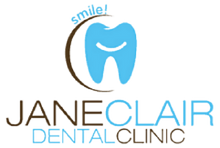Extractions

Tooth extraction or pulling out a tooth is sometimes recommended by a dentist. Although it is quite common, it is a procedure that makes many patients anxious. Tooth extraction can be recommended for a number of reasons.
Ac risus lectus pellentesque elit elementum sed quisque viverra aliquam. Erat gravida cum mi tellus dui viverra. Augue vulputate at erat leo pellentesque. Tristique hac cras molestie sed imperdiet quis est.
Reasons for recommending tooth extraction
Some of the most common reasons for recommending an extraction could be because of crowding, tooth decay, Infection or even risk of infection.
Crowding
Often people's jaw size is too small to accommodate all their teeth and this may result in teeth overlapping. In order to set all your teeth to give you a proper smile, your dentist might recommend extracting a tooth. Sometimes, teeth don't come out of gums completely because they don’t have enough room in the mouth for it. Your dentist could recommend pulling them off if these teeth start impacting hygiene and cause any problems.
Infection
Often when your tooth decays and the damage extends to the pulp -- where your nerves and blood vessels exist, bacteria in your mouth could reach the pulp and cause infection. Usual treatments for this could include antibiotics or even Root Canal treatment but if the infection is severe and most of the tooth structure is destroyed, your dentist could recommend extraction.
Risk of Infection
If your immune system is compromised because of exposure to chemotherapy or because of an organ transplant, risk of infection in your teeth could be a reason to get your teeth extracted.
Periodontal disease
If gum disease or periodontal disease causes infection, poor hygiene, loosening of the teeth, your dentist may recommend tooth extraction.
Procedure
Tooth extraction procedure usually requires local anesthesia, your dentist might inject an anesthetic solution into your jaw or gums to make the area impervious to pain(numb). Depending on how your teeth are placed, your dentist might pull it out directly or cut open the gum and pull the teeth out. An x-ray is usually taken in order to ascertain the position of the teeth. Your dentist would use a device called an elevator to loosen the tooth. Once it is loosened, your dentist would use forceps to remove the tooth.
Risks
Prolonged numbness is possible in some cases but rarely Loosening of adjacent teeth temporarily Infection if post op wound care is not taken seriously
Frequently Asked Questions
Q: Is tooth extraction a painful procedure?
A: No, with adequate anesthesia, there will be slight pressure while pulling out the tooth
Q: Do’s and don’ts after tooth extraction
A: Do not spit blood or saliva, always swallow. We cannot risk of losing the blood clot
Do not do anything that causes pressure in your mouth like smoking, using a straw to drink, sneezing
Keep the wound clean decreasing the risk of infection and faster healing
Q: Patient education for home care after tooth extraction
A: Depending on how your tooth is extracted, your dentist might prescribe the after care. if you have any questions, you can call our dental office for more information.
Q: How much is it going to cost?
A: Depending on the complexity of the procedure, cost varies
